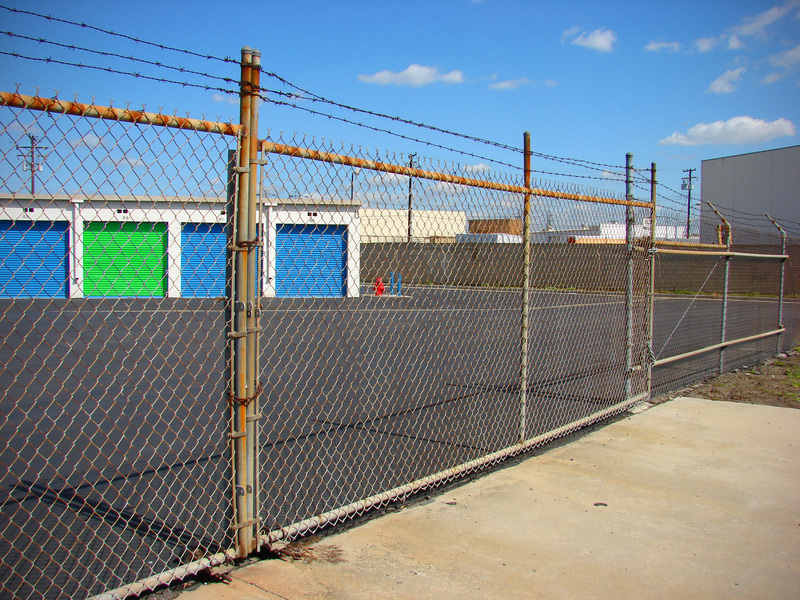Long-Lasting Sofas: Master the Art of Effective Storage
Posted on 17/05/2025
Long-Lasting Sofas: Master the Art of Effective Storage
When it comes to furnishing your home, investing in a quality, long-lasting sofa is no small feat. However, keeping that piece of furniture in impeccable condition requires a blend of proper care and, most crucially, effective storage techniques. Whether you're moving, redecorating, or simply looking to protect your investment during off-seasons, mastering the storage of sofas is essential.
In this comprehensive guide, we'll unravel the secrets to ensuring your sofa's longevity. From pre-storage prep to ideal environments and clever organizational tips, discover how to keep your sofas looking and feeling new for years to come.

Why Proper Sofa Storage Matters
Before delving into how to store sofas for durability, it's important to understand why effective storage is essential for prolonging the life of your cherished seating. The risks of improper storage extend beyond aesthetics; you can unwittingly invite:
- Mold and mildew growth
- Pest infestation
- Permanent fabric discoloration
- Frame warping and damage
- Stubborn odors
By employing best practices for sofa storage, you not only safeguard comfort and style but also protect your investment for the long haul.
Choosing a Sofa Designed to Last
Securing long-lasting sofas starts before storage--it begins at purchase. Look for these hallmarks of durability:
- High-quality frames: Kiln-dried hardwood or engineered wood resist warping and sagging.
- Resilient suspension systems: Eight-way hand-tied springs or serpentine springs offer enduring support.
- Stain-resistant, durable upholstery: Opt for tightly woven cotton, linen, leather, or performance fabrics.
- Top-notch joinery: Reinforced corners and doweled, glued, and screwed joints enhance structural integrity.
If you've already selected a sturdy sofa, you're one step closer to a piece that can withstand the rigors of time and storage.
Pre-Storage Preparation: Laying the Groundwork
1. Clean Thoroughly
Any crumbs, dust, or spills left behind become magnets for pests, stains, and odors. Vacuum cushions, crevices, and frames with an upholstery attachment. For fabric sofas, wash covers if they're removable and safe for laundering. Clean leather with a gentle, pH-balanced cream.
2. Disassemble When Possible
If your sofa allows, remove legs, cushions, and detachable arms. This not only makes transportation easier but also lets you store pieces more efficiently, reducing the risk of breakage or distortion.
3. Protect Vulnerable Areas
Wrap legs and corners with bubble wrap or furniture blankets. This simple step can prevent unsightly dings, scratches, and gouges. If you have a leather sofa, apply a conditioner before wrapping to preserve its surface.
4. Allow for Complete Drying
Ensure every nook and cranny is completely dry before placing in storage. Even a hint of moisture can spell disaster, sparking the growth of mildew and mold on your beloved sofa.
Choosing the Right Storage Environment
Climate-Controlled vs. Standard Storage
When storing a long-lasting sofa, environment is everything. Climate-controlled storage units are highly recommended, as they maintain temperatures and humidity levels ideal for keeping fabrics, cushions, and frames intact.
- Climate-Controlled Storage: Shields against extreme heat, cold, and humidity--perfect for leather and delicate fabrics.
- Standard Storage: Suitable for short-term needs, but riskier for organic materials, wood, or high-end upholstery.
Location and Accessibility
Choose a storage location that is elevated and away from exterior walls or windows when possible. This reduces the chance of water seepage and UV exposure, which can fade and weaken fabrics over time.
Packing and Positioning: The Science Behind Sofa Storage
Proper packing and positioning go a long way in preserving your sofa's form and function.
Optimal Wrapping Techniques
- Breathable Covers: Use cotton sheets or specialized storage covers rather than plastic, which traps moisture and causes mildew. Avoid shrink-wrapping directly on the sofa.
- Extra Padding: Add blankets or foam padding between the sofa and storage cover for an additional layer of defense.
The Best Storage Position
Always store sofas upright on their legs or short sides. Avoid stacking items on top of the sofa, as this can compress cushions and deform frames. If unavoidable, stack only very lightweight, soft items such as comforters or bedding.
Tips for Maintaining Sofas in Long-Term Storage
1. Periodic Airing
Every few months, open covers and allow air circulation to prevent odors and condensation. If your storage unit allows, invest in a small, portable dehumidifier to further control moisture.
2. Pest Prevention
- Scatter cedar blocks: Cedar naturally repels moths and other fabric-loving insects.
- Avoid food-based pest deterrents: Don't place edible substances (like rice or baking soda) as they might attract rodents.
- Seal gaps: Keep the storage area tightly sealed to prevent pests from entering.
3. Regular Inspection
Visit your storage unit quarterly to inspect your upholstered furniture. Look for early signs of moisture, pest activity, or warping, taking corrective measures promptly.
Special Considerations for Different Sofa Types
Not all sofas are created equal. Long-lasting sofas come in various forms and materials, each with its own requirements for optimal storage:
-
Leather Sofas:
- Condition before storage
- Store in cool, dry, climate-controlled areas
- Avoid direct contact with plastic
-
Fabric Upholstery:
- Vacuum and clean thoroughly
- Use breathable, dust-proof covers
- Avoid direct sunlight and humidity
-
Sectional Sofas:
- Disassemble into manageable sections
- Label each part and store hardware separately
- Stack cushions loosely to prevent compression
-
Antique or Vintage Sofas:
- Consult a professional for fragile materials
- Use acid-free padding and wrapping
- Elevate to avoid floor moisture
Unpacking: Restoring Your Sofa After Storage
Once you're ready to bring your stored sofa back into service, following a few key steps will ensure it returns in top shape:
- Carefully remove all covers and wrappings, inspecting for insect or moisture damage.
- Airing out: Place the sofa in a ventilated room or outdoors (weather permitting) for several hours.
- Deep clean: Vacuum all surfaces, wash any removable covers, and wipe down hard surfaces.
- Fluff and reshape cushions to restore their appearance and comfort.
- Tighten and reassemble: Ensure all parts, legs, and hardware are secure before use.
- Condition (leather): Apply leather conditioner and buff for luster and flexibility.
Unique Storage Ideas for Small Spaces
Not everyone has access to a spacious storage unit. Here are some creative strategies for making the most of compact spaces, ensuring your durable sofa remains protected:
- Vertical Storage: Position the sofa upright to free up floor space.
- Under-Bed Storage: For smaller sofas or love seats, slide legs off and tuck the sofa under a raised bed frame.
- Use Multi-Functional Covers: Invest in covers that can double as dust sheets or moving pads.
- Stack Cushions Separately: Place cushions in vacuum-seal bags to minimize bulk while keeping them fresh.
Common Mistakes to Avoid in Sofa Storage
Even with the best intentions, some storage missteps can quickly undo your hard work:
- Covering with plastic wrap: This traps humidity and encourages mold during long-term storage.
- Placing directly on the ground: Always elevate sofas on wooden pallets or risers to avoid absorbing floor dampness.
- Neglecting space around the sofa: Crowding items can cause crushing and prevent airflow.
- Skipping regular checks: Out of sight should not mean out of mind--quarterly inspections are key.
- Ignoring manufacturer advice: Many brands provide storage guidance tailored to your sofa's materials and construction.
Final Thoughts: Ensuring Your Sofa Stands the Test of Time
Long-lasting sofas are more than just a place to sit; they are an investment in your home's comfort and style. Mastering the art of effective storage guarantees that your treasured seating remains a centerpiece for years, resisting the wear and tear that improper conditions can inflict.
With the right preparation, environment, and ongoing care, even the most luxurious or sentimental sofas can survive storage unscathed. Follow the expert advice in this guide, and relish the peace of mind that comes from knowing your furniture--whether modern, vintage, or somewhere in between--will always be ready to welcome you home in pristine condition.

FAQs on Storing Long-Lasting Sofas
How long can I safely store a sofa?
When stored correctly in a climate-controlled unit with proper preparation, a sofa can last in storage for years without deterioration.
Is it safe to store a leather sofa in a regular unit?
It's not recommended. Leather is sensitive to heat and humidity, which can crack or warp it in non-climate-controlled environments.
Can I store a sofa outdoors under a tarp?
Never store a sofa outdoors--even under a tarp. Weather fluctuations, pests, and UV rays can seriously damage every type of sofa.
How do I keep my sofa smelling fresh in storage?
Clean thoroughly before storage, add baking soda sachets nearby (but not on the upholstery), and air out the sofa occasionally to prevent odors.
Conclusion: Invest in Longevity with Smart Sofa Storage
Mastering effective sofa storage is the secret weapon for anyone who wants their furniture to look and feel like new for a lifetime. By understanding material requirements, climate needs, spatial hacks, and the dos and don'ts of storage, anyone can preserve their long-lasting sofa with peace of mind.
Take the time to implement these strategies and enjoy your sofa's continued beauty and comfort, no matter where life takes you.



